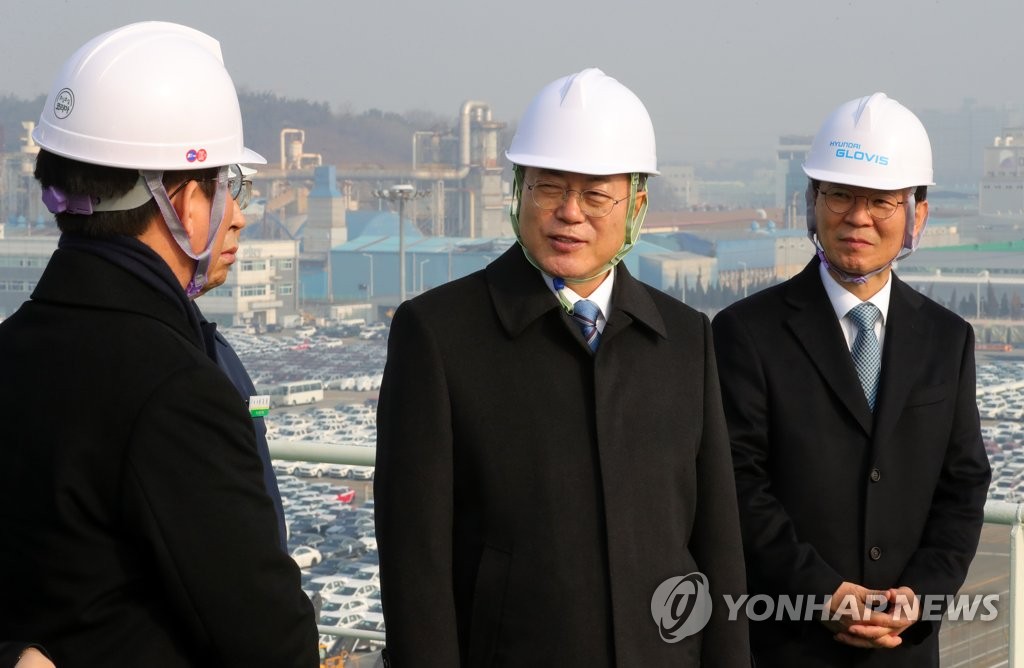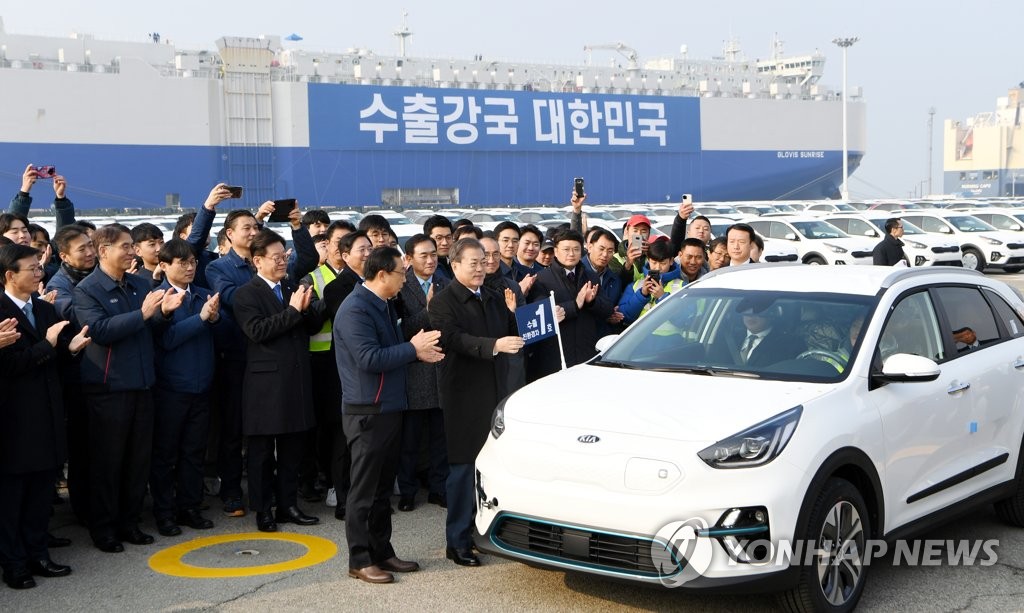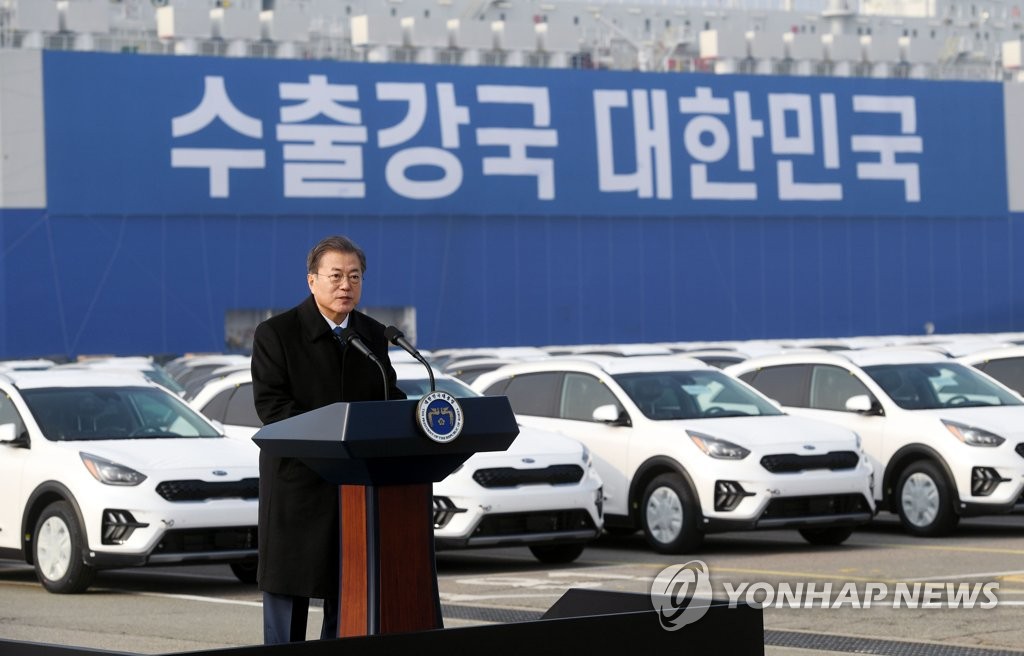- California Assembly OKs highest minimum wage in nation
- S. Korea unveils first graphic cigarette warnings
- US joins with South Korea, Japan in bid to deter North Korea
- LPGA golfer Chun In-gee finally back in action
- S. Korea won’t be top seed in final World Cup qualification round
- US men’s soccer misses 2nd straight Olympics
- US back on track in qualifying with 4-0 win over Guatemala
- High-intensity workout injuries spawn cottage industry
- CDC expands range of Zika mosquitoes into parts of Northeast
- Who knew? ‘The Walking Dead’ is helping families connect
Moon eyes export growth, ‘win-win leap’ in economy this year
President Moon Jae-in chose South Korea’s largest vehicle export port as the venue for his first field visit of the year Friday, a show of his government’s resolve to support the development of environment-friendly automobiles and pull off a rally in exports, a key pillar of the country’s economy.
“Today, we are starting a new decade to make a leap into the world’s big-four export powerhouses by 2030,” he said in a speech delivered at the Pyeongtaek-Dangjin port, some 70 kilometers southwest of Seoul.
He witnessed the loading of environment-friendly vehicles produced by the nation’s major automobile firms — Hyundai and Kia — for customers in Europe.



President Moon Jae-in (C) talks with Industry Minister Sung Yun-mo (L), flanked by Ocean Minister Moon Seong-hyeok, at the Pyeongtaek-Dangjin port, a trade hub of South Korea’s vehicle exports located some 70 kilometers southwest of Seoul, on Jan. 3, 2020. (Yonhap)
The move is seen as part of the liberal president’s pragmatic approach towards local conglomerates, which hold sway in economic growth.
Last October, Moon toured Hyundai Motor’s Namyang R&D Center in Hwaseong, south of Seoul, where he met with the group’s leader, Chung Euisun. Moon earlier attended the groundbreaking ceremony of an electric vehicle parts plant in the southern industrial city of Ulsan.
The Moon administration has formally designated the future-generation car sector as South Korea’s potential growth engine, along with bio-health and non-memory chips.
It has set the goal of making South Korea the world’s most competitive future car producer by 2030.
The government plans to invest more than 380 billion won (US$328 million) in related R&D projects by 2025.
Located adjacent to China’s coastal industrial complexes, the port is highly significant in South Korea’s exports.
It’s “a core base for trade with China and one of the trade ports for ASEAN countries,” Moon said. Around 1.44 million automobiles passed through the port last year.
On Friday alone, more than 4,200 vehicles, including Kia Niro crossover SUVs and Hyundai Neptune semi-trucks, will head to Europe via the port.
Moon pointed out the importance of exports in Asia’s fourth-largest economy.
He struck an upbeat note for 2020, saying the global economic and trade conditions will be better than last year.
“The government will make all-out efforts to turn export indicators into pluses and accelerate innovative growth,” the president added.
South Korea’s exports totaled US$542.4 billion in 2019, down 10.3 percent from $604.8 billion posted a year earlier.
Moon’s on-site visit reflects his determination to pave the way for a “win-win leap” of the local economy based on a rebound in outbound shipments and for the use of the model of environment-friendly vehicle exports in other fields, according to Cheong Wa Dae.
Moon emphasized that South Korea has been able to emerge as a global leader in the “clean car” market thanks to cooperation between small- and medium-sized firms and larger ones, plus concerted efforts by labor, management and the government.











